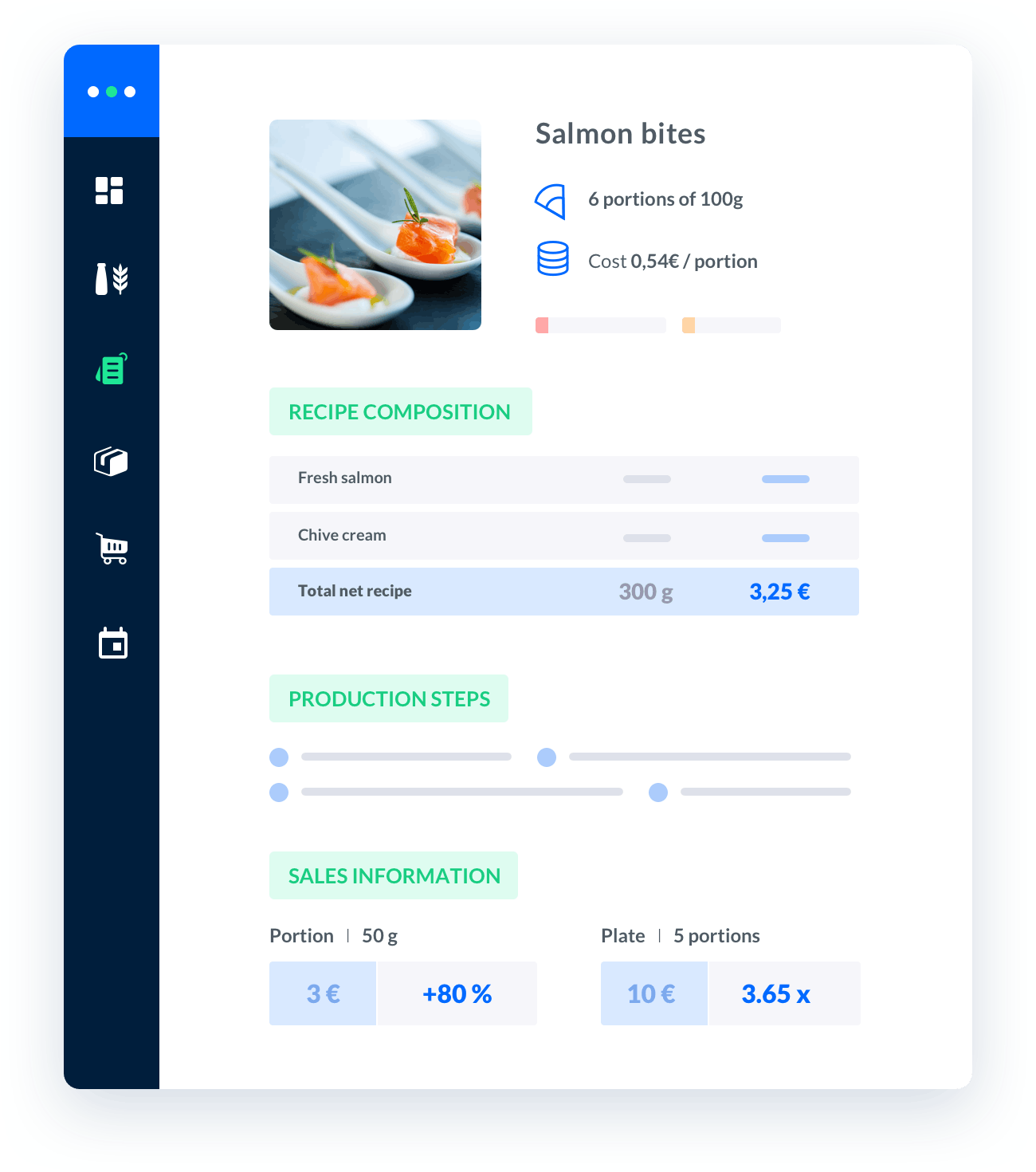free recipe costing spreadsheet
Are you in need of a free recipe costing spreadsheet?Look no further!

Melba: the food cost app to optimize the profitability of your restaurant
Discover how to optimize the profitability of your restaurant with melba

The ultimate guide to food cost restaurant
Learn more about the food cost basis and how to reduce your food cost percentage
Are you in need of a free recipe costing spreadsheet? Look no further! In this comprehensive guide, we will explore the importance of recipe costing, the benefits of using a spreadsheet, and provide you with a step-by-step guide on how to create your own free recipe costing spreadsheet. Whether you are a professional chef, a restaurant owner, or simply an enthusiastic home cook, this resource will help you effectively manage your recipes and keep track of your costs.
The Importance of Recipe Costing
Recipe costing is a crucial aspect of running a successful catering business or managing a kitchen. It allows you to determine the exact cost of each dish on your menu, including the cost of ingredients, labor, and overhead expenses. By accurately calculating your recipe costs, you can make informed decisions about pricing, portion sizes, and menu profitability.
1. Cost Control
Recipe costing enables you to have better control over your expenses. By understanding the cost breakdown of each recipe, you can identify areas where you can optimize and reduce costs without compromising on quality. This knowledge allows you to make informed decisions when purchasing ingredients and managing inventory.
2. Menu Pricing
Knowing the cost of each dish helps you set appropriate prices on your menu. By considering your recipe costs, you can ensure that your prices cover not only the ingredients but also labor and other expenses. This ensures that you are not selling your dishes at a loss and helps you maintain a healthy profit margin.
3. Profitability Analysis
Recipe costing provides valuable insights into the profitability of your menu items. By comparing the cost of each dish to its selling price, you can identify which items are generating the highest profit and which ones may need adjustment. This analysis helps you focus on the most profitable dishes and make data-driven decisions to improve your overall profitability.
The Benefits of Using a Spreadsheet
Now that we understand the importance of recipe costing, let's explore why using a spreadsheet is a practical and efficient solution for managing your recipe costs.
1. Organization and Accessibility
A spreadsheet allows you to organize your recipes, costs, and other relevant information in a structured and easily accessible format. With a well-designed spreadsheet, you can quickly locate and update your recipe costing data whenever necessary.
2. Calculation and Formulas
Spreadsheets offer powerful calculation capabilities, allowing you to automate complex cost calculations. By using formulas, you can instantly calculate ingredient costs, labor expenses, and overall recipe costs without manual calculations. This saves you time and minimizes the risk of errors.
3. Data Analysis
Spreadsheets provide a range of data analysis features that can help you gain valuable insights into your recipe costs. You can create charts, graphs, and pivot tables to visualize your data, making it easier to identify trends, patterns, and areas for improvement.
Creating Your Free Recipe Costing Spreadsheet
Now, let's dive into the step-by-step process of creating your own free recipe costing spreadsheet. Follow these instructions to ensure accuracy and efficiency:
Step 1: Set Up Your Spreadsheet
Start by opening a new spreadsheet in your preferred software, such as Microsoft Excel or Google Sheets. Create column headers for each relevant piece of information, such as Recipe Name, Ingredients, Quantity, Unit Cost, Labor Cost, and Total Cost.
Step 2: Gather Recipe Information
Collect all the necessary information for each recipe you want to include in your spreadsheet. This includes the list of ingredients, their quantities, and their respective costs. Consider including additional details like preparation time and portion size, as these can be useful for future analysis.
Step 3: Enter Data into the Spreadsheet
Enter the gathered recipe information into the appropriate columns of your spreadsheet. Be sure to use consistent units of measurement and accurately input ingredient costs and quantities. Use formulas to automatically calculate the total cost for each recipe based on the provided information.
Step 4: Include Labor Costs
Factor in labor costs by estimating the time required to prepare each recipe and assigning an hourly wage for your staff. Multiply the time spent on each recipe by the hourly wage to obtain the labor cost. Add this to the total cost column in your spreadsheet.
Step 5: Customize and Analyze
Customize your spreadsheet as needed to suit your specific requirements. You can add additional columns for menu categories, allergen information, or any other relevant data. Once your spreadsheet is complete, use its calculation and data analysis features to gain insights into your recipe costs and profitability.
By following these steps, you can create your own free recipe costing spreadsheet, tailored to your unique needs. Remember to regularly update and maintain your spreadsheet as ingredient prices and other costs may change over time.
Now that you have a comprehensive understanding of the importance of recipe costing and the benefits of using a spreadsheet, you are equipped with the knowledge to effectively manage your recipe costs. Start creating your free recipe costing spreadsheet today and take control of your catering business or kitchen!






